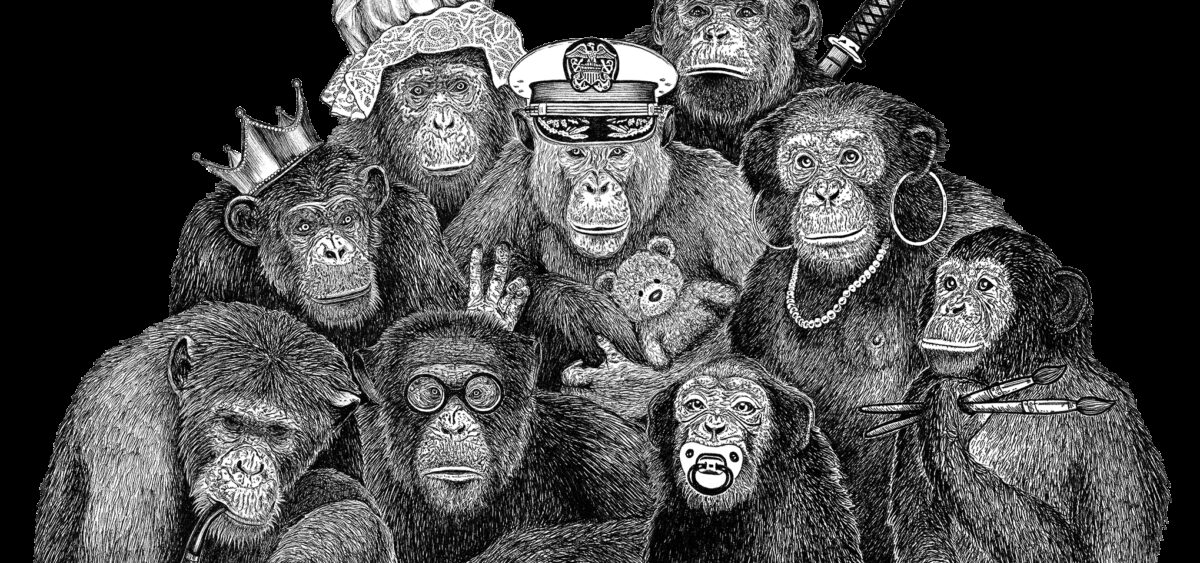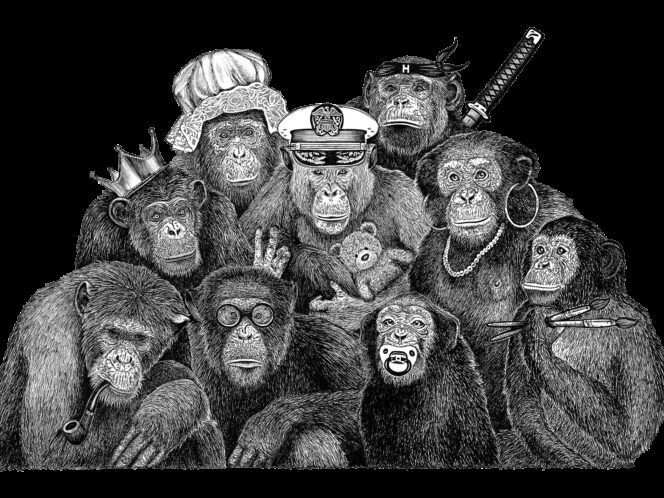
I learned that in Warsaw Zoo, it’s the female chimpanzees who lead the troop rather than the males. That’s an unusual arrangement out there, in nature. “Look at that, a female revolution,” I thought, and it warmed my heart.
Common chimpanzees, unlike matriarchal bonobos, live in strictly patriarchal communities. Yet I was told that in Warsaw Zoo, the females had taken over the troop. I decided I had to see it with my own eyes. That’s how I learned the story of three female chimpanzees who, although related, grew up to have remarkably different personalities and approaches to life. Soon, I met other primates from the Warsaw troop. Right now, there are eight: four girls (Mandy, Lucy, Kimberly and Liza) and four boys (Patryk, Szymon, Zarno and Frodo). And, just like humans, each of them is an individual in their own right.
I’m watching them through the glass pane separating me from the indoor enclosure. Mandy, one of the main figures of our story, is sleeping in a hammock high under the ceiling. Szymon is easy to tell apart from the others: the nape of his neck is frayed and balding, and his head sprinkled with silver. He’s now sitting with his back turned to the glass. Patryk is lounging lazily on a tree trunk. Frodo, who is only four and a half, is having a blast playing with a piece of red fabric. Lucy is napping, stretched on her side. Her head rests propped on her hand, her feet lay folded together, her heavy dark eyelids fall half-closed. She’s breathing steadily. Her coat is very dark, and so is her face (young faces are light-coloured and darken with age). Lucy







